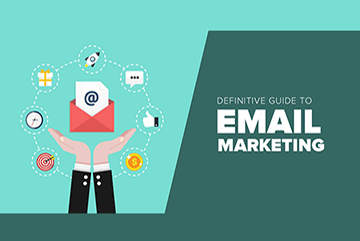
Email marketing is an ample way to attain your customers where they are without spending a lot of money. Accordingly to Email marketing magnificent way to reach new customers, while maintaining your already-rooted customer base. But it’s a big responsibility, too as people don’t give their email addresses to just anyone. And Email marketing allows giving prominence one of the best features of your small business, which are exteriorizations.
Here are seven key email marketing tips for small businesses.
Make sure sign-up is appealing and easy
If you want to use email when marketing your business, then you need signups. Without them, your only option for finding recipients is to purchase an email list or partner with a third-party marketing firm. Often times these options are not feasible for most small businesses, as they represent significant expenses.Instead, focus your efforts on encouraging people who visit your website to sign up to receive your emails.
To further incentivize your site visitors, consider offering a discount, free giveaway or potential prize to anyone who signs up to receive regular emails from your company.
Integrate social
Another key to successful email marketing, according to Small Business Trends, is integrating social media with these efforts. Social media is now a critical marketing tool for organizations in every industry, and you need to take advantage of this resource if you want to maximize your outreach. By uniting your social marketing with your email-based initiatives, you can improve the effectiveness of both.
The source recommended two strategies for achieving this goal. The first and most obvious is to include links to your business’s various social media accounts whenever you send out an email.
The other way to integrate social and email marketing, according to Small Business Trends, is through social sharing.
“When it comes to marketing emails, taking advantage of social sharing means giving your subscribers a way to easily, immediately post your email content to a social network,” the source explained. “You can either allow recipients to share specific pieces of the email (pin a photo to Pinterest, for example), or you can allow them to share the entire email (or both).”
Stay compliant, no matter what
If you’re planning to leverage email marketing for your business – and you should – then you need to be aware of the relevant compliance regulations. Most notably, there is the CAN-SPAM Act. Among other things, this law requires all marketing emails to have an obvious mechanism for unsubscribing from future emails, and all opt-out requests must be honored within 10 business days.
If you don’t follow these guidelines, you may face significant fines and other sanctions. It’s not worth the risk.
To make sure you stay compliant, you need to ensure you have the resources in place to acknowledge and react to unsubscribe request. You may be able to do this manually if your volume is low, but as it grows you may need to invest in email management software that can handle this responsibility automatically.
Don’t say nothing
However, it is essential to note that while frequency is important, you should not send out email marketing messages if you don’t have anything to say or offer. Content always matters. If your content is lacking, then your email marketing efforts will prove not only ineffective but actually detrimental. Your subscribers will quickly realize that there’s no value to be gained by reading what you’re offering, and they will unsubscribe or skip your messages as a result. And you’ll be wasting a lot of time and effort to produce this substance-free marketing effort.
Set proper expectations
Tell your subscribers what kind of information to expect from you (new posts, infographics, coupons, offers, etc) and when (every day, every week, whenever you have a new post, etc.).
Be honest and try not to promise something you cannot deliver otherwise your email marketing efforts will fail.
Keep an eye on your competitors
Register on your competitors email list and see what techniques they are using, what kind of emails they send out, how often, what kind of products they promote etc.
Your intention is not to copy or mimic your competitor’s practices but to make sure that you are ahead of them.

